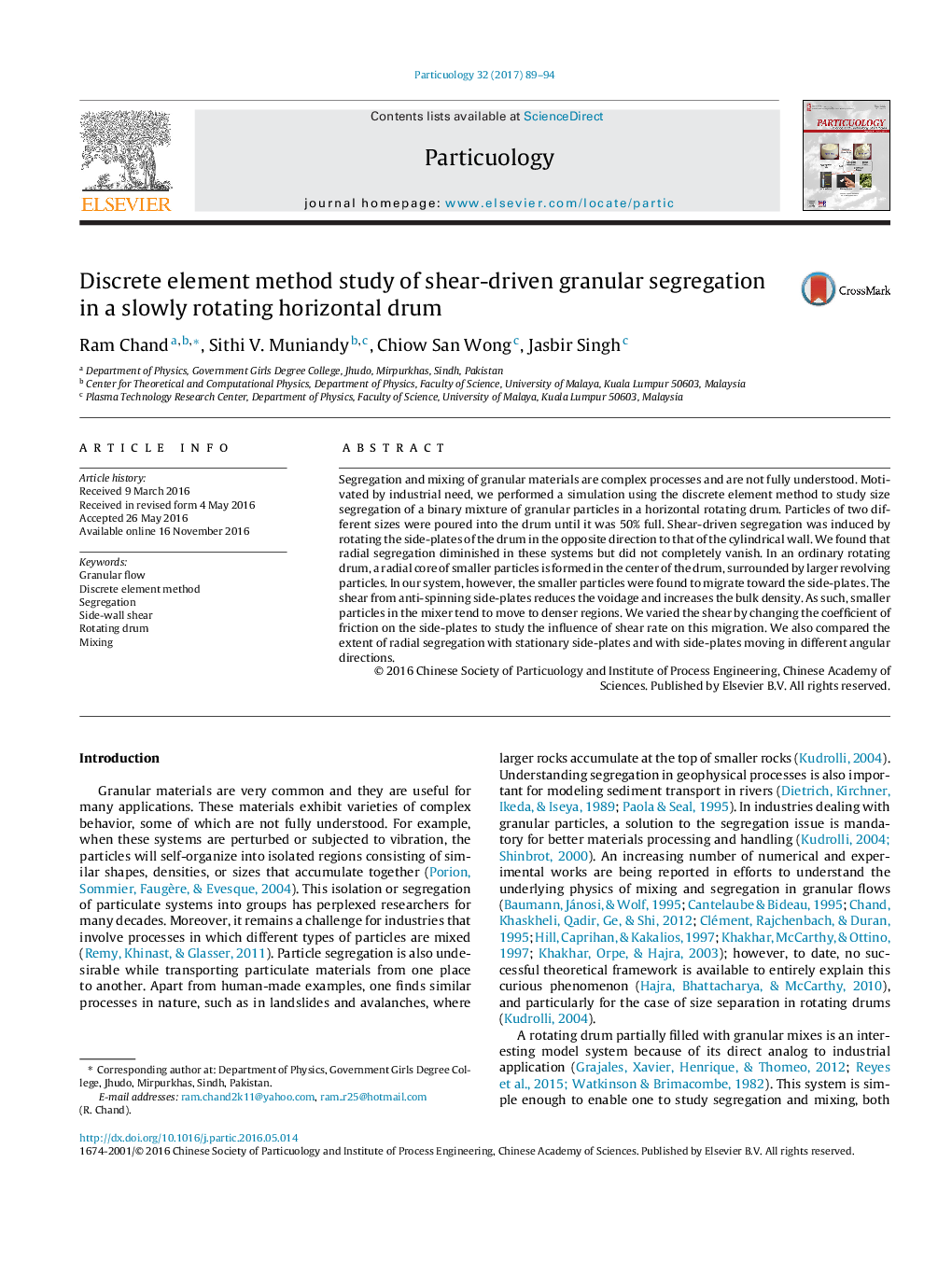| Article ID | Journal | Published Year | Pages | File Type |
|---|---|---|---|---|
| 4995718 | Particuology | 2017 | 6 Pages |
â¢Shear-drive size segregation of binary granular particles in drum was simulated.â¢Anti-spinning of side plates caused migration of smaller particles toward side-plates.â¢Coefficient of friction on the side-plates caused more migration toward side-plates.â¢Radial segregation was diminished in the system configuration.
Segregation and mixing of granular materials are complex processes and are not fully understood. Motivated by industrial need, we performed a simulation using the discrete element method to study size segregation of a binary mixture of granular particles in a horizontal rotating drum. Particles of two different sizes were poured into the drum until it was 50% full. Shear-driven segregation was induced by rotating the side-plates of the drum in the opposite direction to that of the cylindrical wall. We found that radial segregation diminished in these systems but did not completely vanish. In an ordinary rotating drum, a radial core of smaller particles is formed in the center of the drum, surrounded by larger revolving particles. In our system, however, the smaller particles were found to migrate toward the side-plates. The shear from anti-spinning side-plates reduces the voidage and increases the bulk density. As such, smaller particles in the mixer tend to move to denser regions. We varied the shear by changing the coefficient of friction on the side-plates to study the influence of shear rate on this migration. We also compared the extent of radial segregation with stationary side-plates and with side-plates moving in different angular directions.
Graphical abstractDownload high-res image (205KB)Download full-size image
